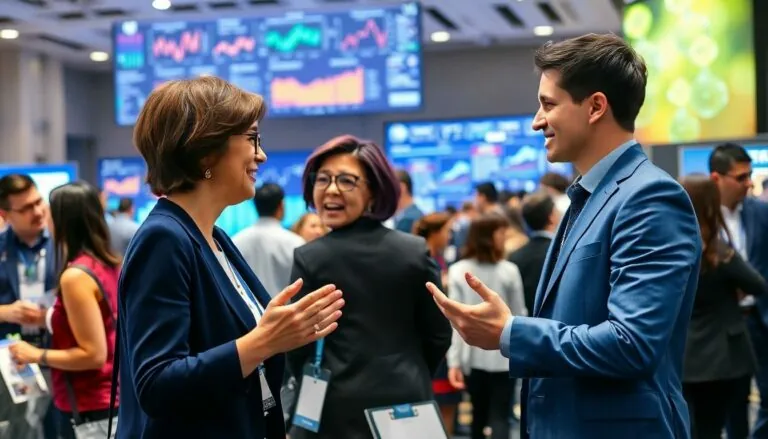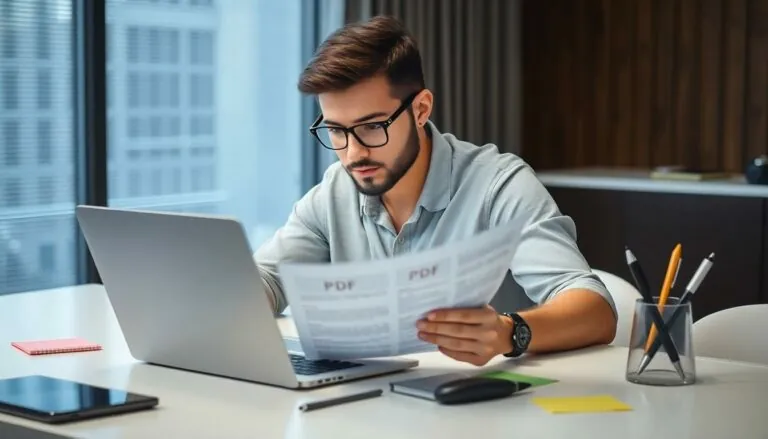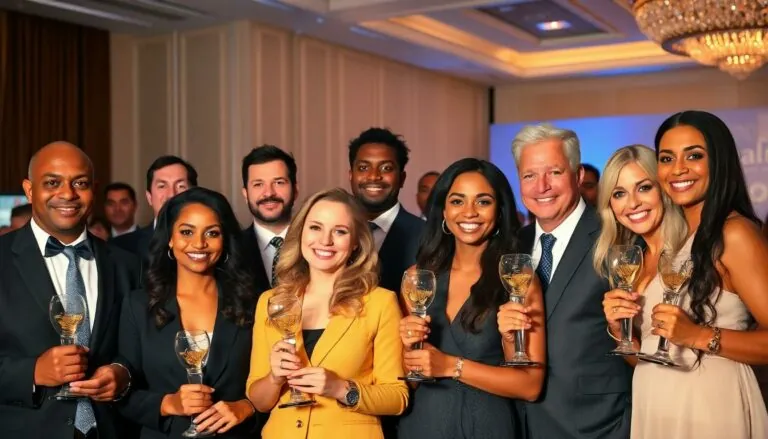Table of Contents
ToggleIn a world where cats reign supreme on the internet, a new feline phenomenon is taking center stage: AI-generated cats. Imagine a universe where every whisker, purr, and playful swat is crafted by cutting-edge algorithms instead of nature. These digital furballs are not just a quirky trend; they’re a glimpse into the future of creativity and technology.
With AI’s uncanny ability to generate endless variations of our favorite furry companions, the possibilities are as limitless as a cat’s curiosity. From fluffy Persian purr machines to sleek Siamese mischief-makers, these virtual kitties are here to steal hearts and maybe even a few catnip toys. So get ready to dive into the whimsical world of AI-generated cats, where the only thing more surprising than their looks is the sheer joy they bring to cat lovers everywhere.
Overview of AI Generated Cats
AI-generated cats represent a pioneering fusion of art and technology. Artists and developers harness artificial intelligence to create diverse cat breeds, including fluffy Persians and sleek Siamese. These digital felines showcase unique features and personalities, offering endless variations that delight pet lovers and enthusiasts.
Technological advancements in machine learning and neural networks enable the creation of realistic cat images and animations. Techniques like deep learning assist algorithms in understanding cat anatomy and behavior, resulting in lifelike representations. Creativity flourishes through platforms that allow users to customize and generate their unique virtual cats easily.
Interest in AI-generated cats extends beyond aesthetics. Many use these creations for entertainment, social media content, or even gaming. Digital platforms and websites host competitions showcasing the most innovative and imaginative AI-generated cats, fostering community engagement.
Moreover, AI-generated cats often provide inspiration for traditional artists. Observing these unique digital representations can spark ideas, encouraging new artistic approaches in painting, drawing, or photography. The synergy between AI and human creativity fosters new realms of expression, enriching the artistic landscape.
Curiosity about AI-generated cats continues to grow. The appeal lies in their playful essence and the technology behind them. As advancements in AI develop, future innovations could surprise and inspire imagination regarding virtual and digital companions.
The Technology Behind AI Generated Cats
AI-generated cats rely on advanced technologies that combine innovation with creativity. Understanding these technologies reveals how digital felines come to life.
Machine Learning Algorithms
Machine learning algorithms serve as the backbone of AI-generated cats. These algorithms analyze vast data sets of real cat images, identifying patterns in fur colors, shapes, and sizes. The process involves training neural networks to recognize and replicate specific features unique to various breeds. Variations capture the essence of each breed, allowing for customization of traits such as eye color and fur length. By leveraging artificial intelligence, developers create images that closely resemble real-life cats. Customization possibilities empower users to generate their digital companions easily.
Artistic Styles and Variations
Artistic styles influence the presentation of AI-generated cats. Diverse techniques emerge from minimalistic designs to hyper-realistic renderings. Each style caters to different preferences, attracting a wide audience. Variations include abstract interpretations that highlight unique color palettes and imaginative forms. Other styles mimic traditional artistry, bringing a sense of nostalgia and warmth. Experimentation in styles pushes the boundaries of creativity, encouraging users to explore various artistic expressions. AI thus fosters an environment where imagination flourishes, allowing the creation of captivating virtual felines.
Applications of AI Generated Cats
AI-generated cats find applications in various fields, enhancing creativity and functionality in digital spaces.
Digital Art and Media
Artistic communities leverage AI-generated cats to produce unique visual content. Artists create stunning illustrations that showcase an array of cat breeds, appealing to diverse audiences. Customized virtual felines serve as central figures in animated shorts and digital comics, engaging viewers with their distinctive personalities. Platforms like Instagram and TikTok abound with entertaining videos of AI-generated cats, captivating large followings. The integration of these creations into graphic design projects allows for innovative merchandise, ranging from posters to clothing, promoting artistic expression.
Commercial Use in Products
Businesses increasingly adopt AI-generated cats across various product lines. Retailers design pet accessories featuring these digital companions, merging novelty with functionality. Custom cat-themed merchandise like mugs, calendars, and phone cases attract consumers seeking unique gifts. Companies also utilize AI-generated cats in marketing campaigns to capture attention and engage potential customers. Video games incorporate these virtual pets as engaging characters, enhancing user experience and allowing players to interact with personalized companions. Both the creative and commercial realms benefit from the versatility and appeal of AI-generated cats.
Ethical Considerations
Ethical considerations regarding AI-generated cats involve various complexities. One primary issue centers around ownership and copyright.
Ownership and Copyright Issues
Ownership of AI-generated content raises questions about intellectual property. Determining who holds the rights—the creator of the algorithm, the user producing the work, or the copyright holder of the training data—remains unclear. Legal frameworks lack specific guidelines for digital creations from AI. Many argue that users who customize AI-generated cats should have rights to their creations, while others contend that the original creators retain ownership. Legal scrutiny continues as the market for AI-generated art expands, especially considering the potential for unauthorized use of copyrighted images in training datasets.
The Impact on Traditional Artists
Traditional artists face challenges from the rise of AI-generated cats. Some express concern that these digital creations devalue their work, as consumers might prefer quick, affordable options over traditional art forms. Many artists find inspiration in AI-generated features, using them to explore new creative avenues. A diverse range of artistic styles emerges as artists blend technology with their creations. Balancing innovation and preservation of traditional art becomes essential in a landscape increasingly dominated by AI. Emphasizing the unique value of handmade art may foster coexistence in this evolving artistic ecosystem.
Future Trends in AI Generated Cats
AI-generated cats continue to evolve, reflecting advancements in technology and creative expression. Emerging trends indicate a rise in hyper-realistic depictions, captivating audiences through lifelike features and expressions. Diverse platforms showcase this creativity, illustrating various art styles from cartoonish to realistic. Customization options expand, enabling users to select specific traits and personalities for their digital companions.
Gaming industries increasingly incorporate AI-generated cats as characters within virtual worlds, enriching user interactions and gameplay experiences. Social media platforms leverage these digital cats for engaging content, enhancing user engagement through shareable videos and images. As communities grow around AI-generated cats, virtual competitions and showcases become more popular, fostering collaboration among enthusiasts and creators.
Educational institutions begin to explore the integration of AI-generated cats into their curricula, providing students with hands-on experience in art and technology intersection. Workshops and courses emerge, teaching aspiring artists about the tools and techniques used to create these digital companions. Through these initiatives, artistic communities can further their understanding of machine learning and its creative potential.
Concerns surrounding ethics in AI-generated cats also rise. Content ownership debates intensify as artists and developers seek clarity on rights associated with digital creations. As the market continues to expand, legal frameworks must adapt to address issues of copyright and fair use. Balancing innovation with traditional artistry creates opportunities for dialogue, allowing artists to work alongside technological advancements.
Interest in AI-generated cats remains high, with their presence poised to reshape entertainment, art, and communication in vibrant new ways. Keeping an eye on these trends allows enthusiasts to appreciate the evolving nature of creativity and technology.
AI-generated cats are transforming the creative landscape by blending technology and artistry in exciting ways. These virtual companions not only provide entertainment but also inspire traditional artists to explore new mediums. As customization options grow and applications expand across various sectors, the impact of AI-generated cats will continue to resonate.
Addressing the ethical considerations surrounding ownership and copyright will be crucial as this phenomenon evolves. The future promises even more innovative possibilities, ensuring that AI-generated cats remain a significant part of contemporary culture and creativity. Embracing this whimsical trend can enrich both the digital and artistic realms, inviting everyone to participate in this fascinating intersection of creativity and technology.





